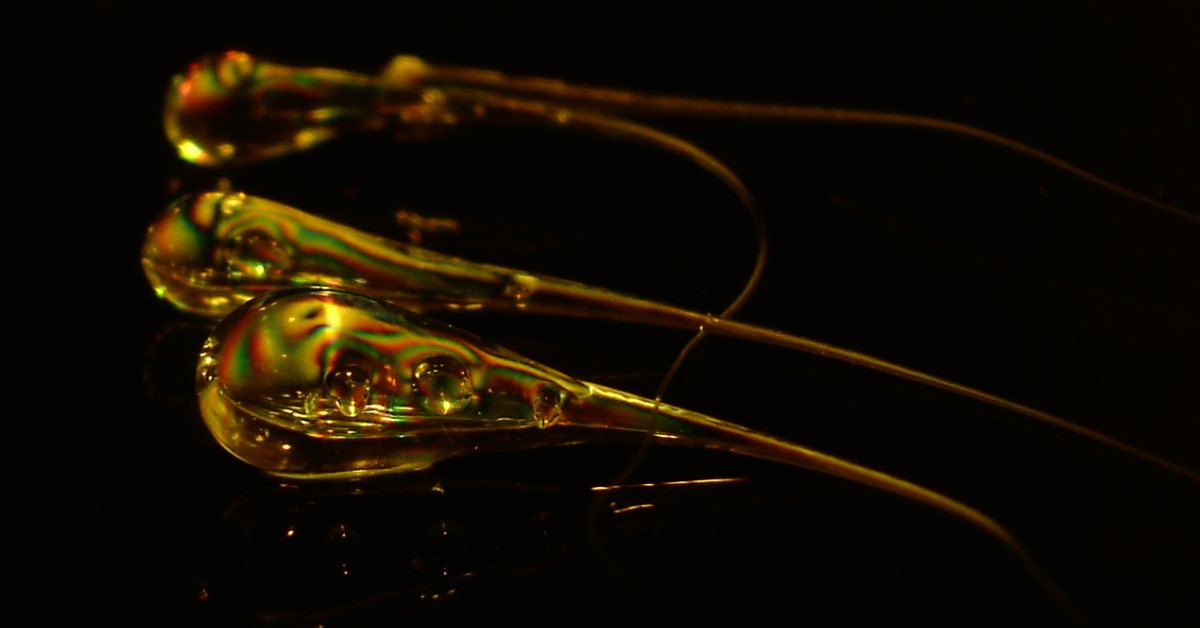Have you ever associated glass with one of the most ingenious pranks in history? Probably not, but we're about to tell you one Story, that of Prince Rupert's drops, which begins in European courts of the seventeenth century and which reaches the present day thanks to thescientific interest which fueled its spread.
Prince Rupert drops, also known as larmes Bataviques, tears of Batavia, are small objects of tempered glass in the shape of a teardrop or tadpole, characterized by enormous internal tensions. These drops are obtained by dripping molten glass directly into water, in an extreme tempering process that causes enormous tension in the material.
The story of the joke
Tradition has it that the prince Rupert of Bavaria (1619-1683) brought the tears of Batavia to the attention of Charles II, King of England. The prince, passionate about science and eager for experiences, following one of his numerous trips, brought the glass drops to England and consulted the Royal Society to find out their peculiarities.
But the intriguing joke of the "tempered glass worms" was not confined to northern Europe. In fact, it also touched Italy. Geminiano Montanari, mathematician and astronomer contemporary with Prince Rupert, was so impressed by the mechanics of drops that he conducted several research, making even the Grand Duke of Tuscany Ferdinando II aware of it.
Why were men of the XNUMXth century so fascinated by Prince Rupert's drops?
The joke was pretty simple. This small object amazed with its extraordinary hardness, capable of defying hammer blows. Following this showdown, the tear of Batavia was placed in the hands of one of those present. And a slight blow to the tail was enough to cause the immediate explosion of the drop, to the incredulity of the bystanders.
How can an object be so hard and so fragile at the same time?
Today this characteristic is attributed, on the edge of the oxymoron, to the tempering process: the rapid cooling of the outer layer of Prince Rupert's drops exerts a compression on the inner layer, which is slower in cooling and tends to relax towards the outside.
Such contrary tensions explain both the resistance and the fragility of Batavia's tears. The two forces remain in equilibrium until the tail of the drop is truncated, an area dominated by compressive stresses, which support the impact by releasing the internal stress.
A study of matter
Formations similar to Prince Rupert drops they are produced, under specific conditions, from volcanic lava. This explains why the interest in Batavia's tears is still so alive. Their explosive fragmentation is, in fact, the object of numerous researches aimed at investigating the distribution of the size of the fragments, in parallel with the stresses stored in active volcanoes.
We are therefore faced with much more than a joke that has been able to transcend the centuries. Prince Rupert's drops represent a real technological discovery that guides us in understanding the marvelous complexity of matter.
Sources: Scienzainrete.it, sciencecue.it, wikipedia.org
Image source: Mg3kc at English Wikipedia, Public domain, via Wikimedia Commons



